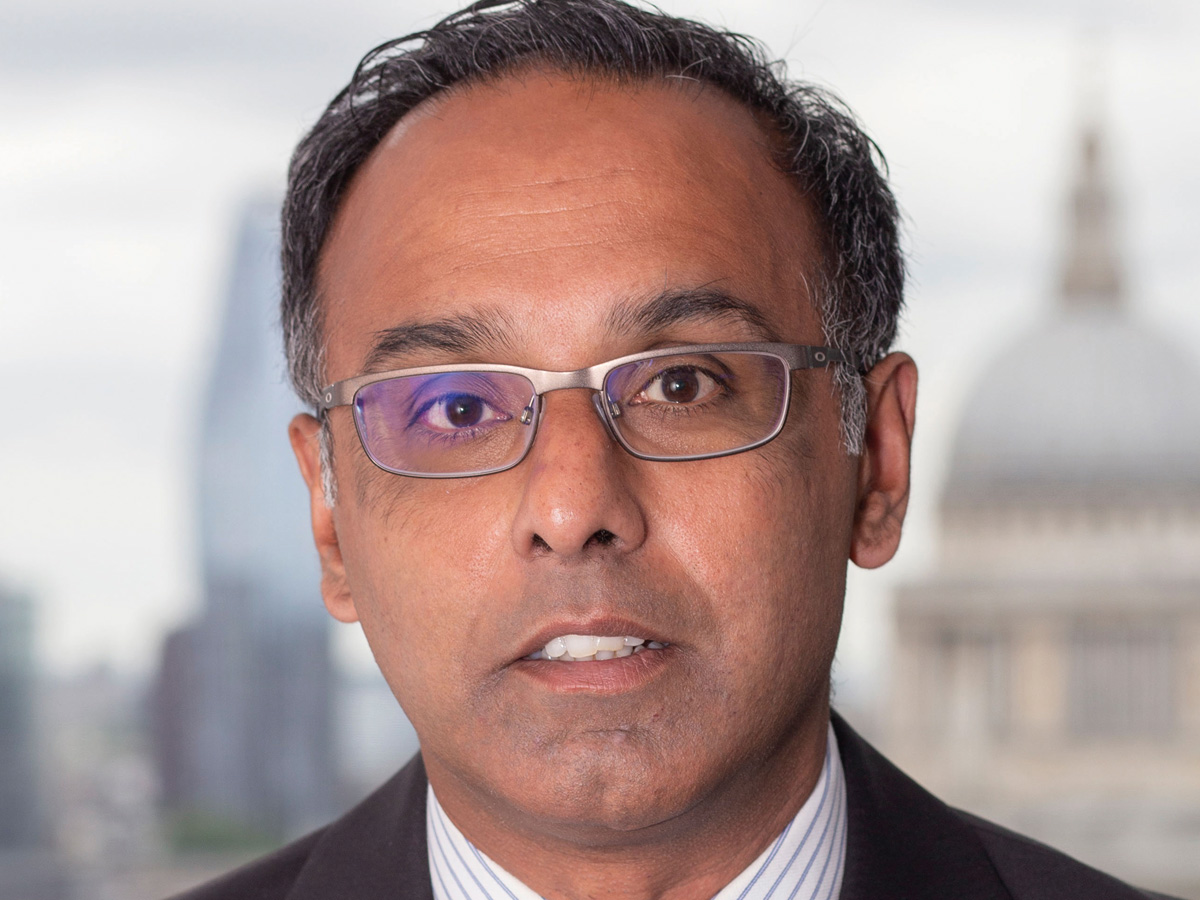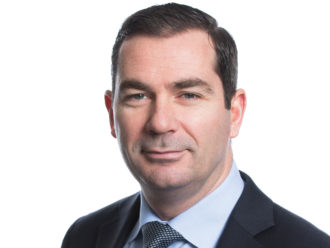It is two years since Centrica entered into an OCIO partnership with Schroders. Is it working as expected?
Everything has gone positively from an in-house team perspective. I speak for the Centrica trustees, and it feels that they are pleased with the outcome of how the partnership has gone.
If we go back to the primary reason for the trustees entering into an outsourced chief investment officer (OCIO) partnership, it was to strengthen the business continuity and deepen the client team. We were a team of seven, sitting in Windsor, which is not the easiest place to get investment professionals to come and work.
We were getting sequential turnover and it was proving hard to find replacements. At times, it was taking a year from someone leaving to a replacement coming through the door. That is quite debilitating when you are a small team.
Fast forward to sitting within Schroders Solutions, which is the OCIO and fiduciary management part of Schroders, the team is more than 150 people, so we are well resourced with a deeper pool of people working on the portfolio. That part has worked well.
And interestingly, our in-house team of seven are still here – another indication of the OCIO working.
The other thing that was important to the trustees was getting an operational set-up where the OCIO oversight was closer to the liability-driven investment (LDI) implementation. So without having a crystal ball, and foresight about the gilts crisis, the Centrica trustees recognised a way to strengthen operational processes.
Moving the LDI to Schroders, as part of the OCIO arrangement, has resulted in a vast improvement in the speed and real-time nature availability of management information in relation to the LDI portfolio. The OCIO partnership has therefore ticked all those primary objectives.
What have been the benefits and challenges of adopting an OCIO approach?
A real benefit is having that instant access to the vast investment resource within Schroders. We get a tremendous amount of support. We have direct access to the practitioners: for example, the people who manage equity and fixed income portfolios, a 50-strong team on ESG – things like that.
As well as access to the research side, which we can plug into. Less obvious, but equally important, is the legal aspect. Having a legal team which have done a lot of the same work we commissioned, means they can provide useful guidance immediately and at no additional cost.
On the challenging side, the big focus surrounded having a seamless transition. We ended work on the Friday as Centrica, and started work on the Monday at Schroders, but doing exactly the same thing. That process needed to be done effectively. We came through that well.
All in all, there were very little teething challenges. We needed to ensure we were aligned and adhered to the operational risk framework that a big firm like Schorders has, but this was an example of us benefitting from Schroders’ comprehensive capabilities. Then of course it was integrating the team within the business. Which has gone well.
The other thing is as an in-house team [within Centrica] we were almost adjoint of the trustees, whereas now we are a service provider. The key thing was to make sure we got that subtle change correct and acted appropriately in this slightly different role. I think we have nailed it.
Was it slightly nerve wrecking or was it exciting moving to that transition?
Both. We felt like we nailed the preparation. But you are always nervous that something could go wrong. That said, we were con dent that if anything were to go wrong it would be minor in nature. I cannot recall anything going wrong.
How long did you consider and discuss the OCIO before taking the plunge?
The process in totality lasted just under two years. At the time the trustees were considering it there hadn’t been a UK corporate pension scheme announce an OCIO. So to the trustees it did feel like they were first movers in taking this step.
Have you had other pension funds considering an OCIO contact you?
Yeah. I always had those conversations on it before we did the OCIO and have carried on those conversations. Just by the nature that we have catch ups other pension funds do ask: ‘how it’s going’, and ‘what has the experience been like’.
On a practical level, who reports to whom within the OCIO structure?
The head of the OCIO is Neil Walton within Schroders. I report to him. And he also provides a lot of oversight on the Centrica account. The cores of the Centrica team continue to report to me.
Presumably you are happy with the structure?
Yes. If you think about building a scaleable business you need a structure which takes on a degree of specialism. Going back to the old Centrica structure, I was effectively running a seven-person outfit. I oversaw investment strategy, the investment implementation and operations.
In a scalable business these are three distinct functions. You then have to get segmentation about who delivers what. Schroders has integrated OCIO arrangements really well, as they have flexibility and scale. It was the mantra of the Centrica trustees to have a seamless transition and that focus on business continuity.
You mentioned business continuity was central to the Centrica trustees’ thinking behind embracing the OCIO approach. Did other ideas motivate your thinking?
It was business continuity and combining the LDI and OCIO oversight, which were the main drivers. Probably owing from those two aspects it was also about getting optimal governance at the trustee level when making investment decisions.
Some asset owners suggest that going down the OCIO route means losing a central investment culture within the organisation: what would you say to that?
I would disagree. If I look at how we have been transitioned and been brought into the business, I view it as a thoughtful way, because as a team we have kept our culture and also integrated into the combined culture. We have benefited from the best of both cultures.
That is not necessarily going to be the case with every rm. The culture of Schroders was important. But it was about a central idea: we have to drive optimal client outcomes – how do we do that? I am not sure all organisations have that client focus.
What would you say to asset owners considering an OCIO?
You need to do what is right for your governance structure and circumstances of your scheme. I do not want to say an OCIO is the nirvana for every scheme, but it works in certain circumstances, and works well when it is appropriate. It is about working out what you need to achieve. These are big relationships. They have to be trusted partnerships and involve big amounts of money.
The culture, brand and philosophy we have is to do the right thing by the client and these are important things. Those cultural aspects are probably not given enough weight in the [OCIO] selection processes.
I would argue some companies should be red flagged on that basis. The other aspect is around letting you have an open architecture portfolio. So you are not having your portfolio filled with products from the underlying asset manager.
For example, within Centrica the trustees decided to use Schroders for LDI, and two years on, this remains the key Schroders product in the Centrica portfolio. So be mindful of that cultural approach.
I also think the heritage of asset management in risk management expertise over several years is important. Some players in the market just don’t have that.
What changes to the investment portfolio have you made under the OCIO?
The way to think about this is – it is not as a result of the on-going move to an OCIO – many of the changes were spurred by the gilts crisis. The outcomes of the gilts crisis: improved funding and lower required returns, have resulted in not needing to take as much risk in portfolios.
So as result of the gilts crisis we have a different shaped portfolio. Centrica has an illiquid portfolio, which has gone overweight. We are managing that back down to its original level.
Could you therefore hone in on some specific investment examples.
The illiquid assets in our clients’ portfolios are a diversified mix of private equity, private debt, renewables, other long-dated contractual income assets, social housing debt, that kind of stuff.
How has the OCIO fitted in with your ESG objectives?
The introduction of having to do a Task Force on Climate-related Financial Dis- closures (TCFD) report has been extremely onerous on all UK pension schemes. And having to put that report together when were a team of seven, was a real challenge. Also, not having any centralised support on best practice made it harder.
Moving over to Schroders, the firm has around 50 dedicated ESG specialists within Schoders Solutions, so we have suddenly been able to plug into central thinking on best practice on TCFD.
On other ESG aspects, it is a similar story, being able to plug into a much bigger sup- port network to help us with our ESG work
Could you expand on your ESG investment approach and net-zero objectives?
Centrica has undertaken an ESG review and is looking to set a net-zero target. The approach is skewed to engagement. Schroders philosophy is similar: a preference for engagement, not exclusions.
How long do you see yourself remaining the CIO within the OCIO?
I am about to turn 50, and my vision is to see this through to retirement. There is a lot of scope for the OCIO trend to develop. There are still quite a few big UK schemes that are likely to go down the OCIO route. That will bring, for me personally, a diversity of client exposure.
Then if we look forward a few years, the applicability is to every other type of institutional investor around the world. Therefore I see plenty for us as a business, and for me personally, to be getting involved OCIO wise.
What do you see as being the macro-economic and geopolitical challenges likely to have an impact on your investment portfolio going forward?
The macro-economic environment is testing every year. The mantra is to build robust portfolios and have sufficient diversification. There is no substitute for that. Sometimes you have to just weather the shorter-term noise by being a longer-term investor.
When it comes to UK corporate pension schemes you clearly have the outcomes from Mansion House. But such is the level of existing de-risking within these schemes that it is not going to have too much of an influence.
For these de-risked schemes, the one thing that could derail you is a glut of defaults on your investment-grade assets that could blow you o course. But without such a glut of defaults, if you are holding these assets to maturity, pensions schemes are likely to stay on track.
CHETAN GHOSH’S CV
May 2022 – present
Chief investment officer
Schroders Solutions OCIO
September 2009 – May 2022
Chief investment officer
Centrica Pension Scheme
March 2008 – August 2009
Investment consultant
Alexander Forbes
2005 – 2007
Senior investment consultant
Lane Clark & Peacock





Comments